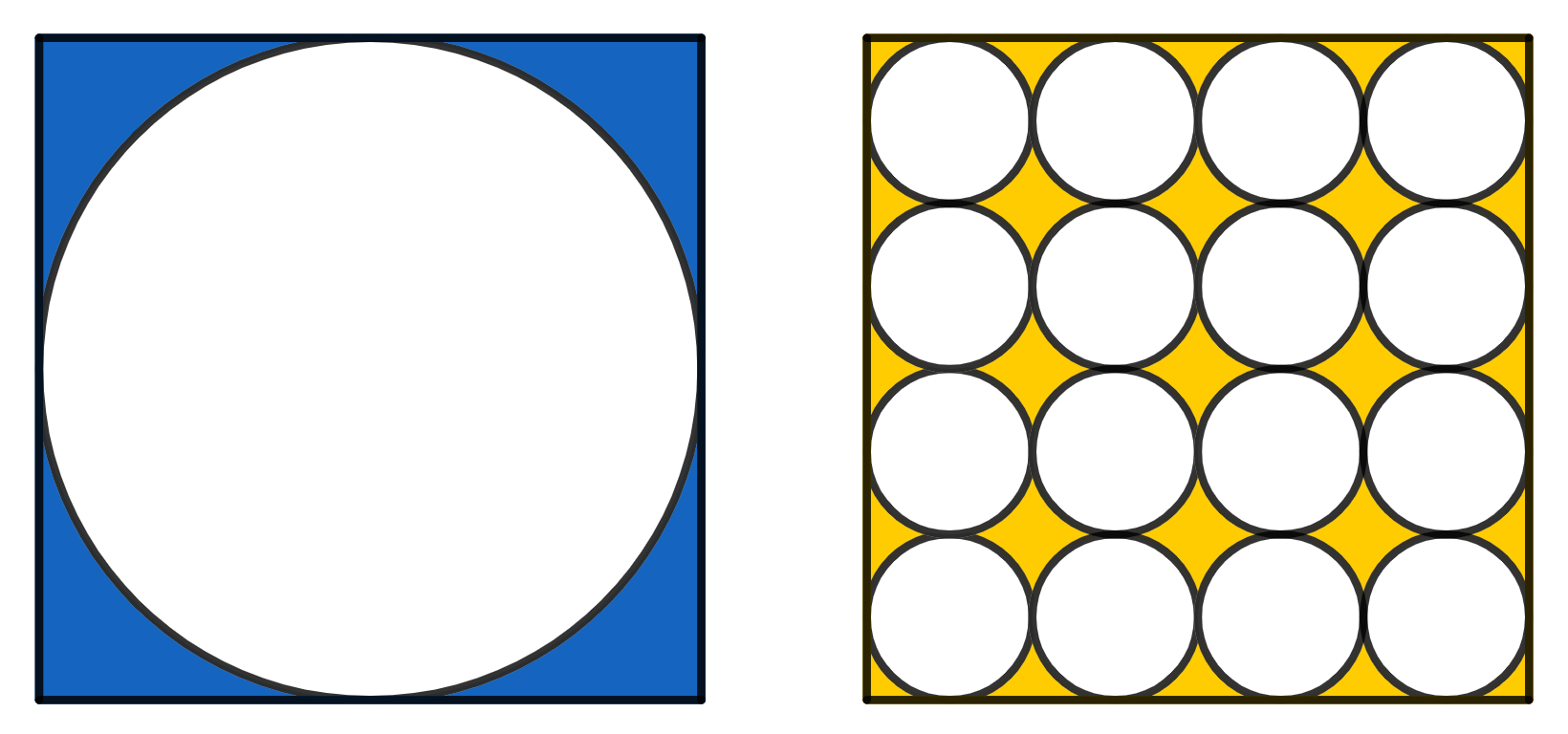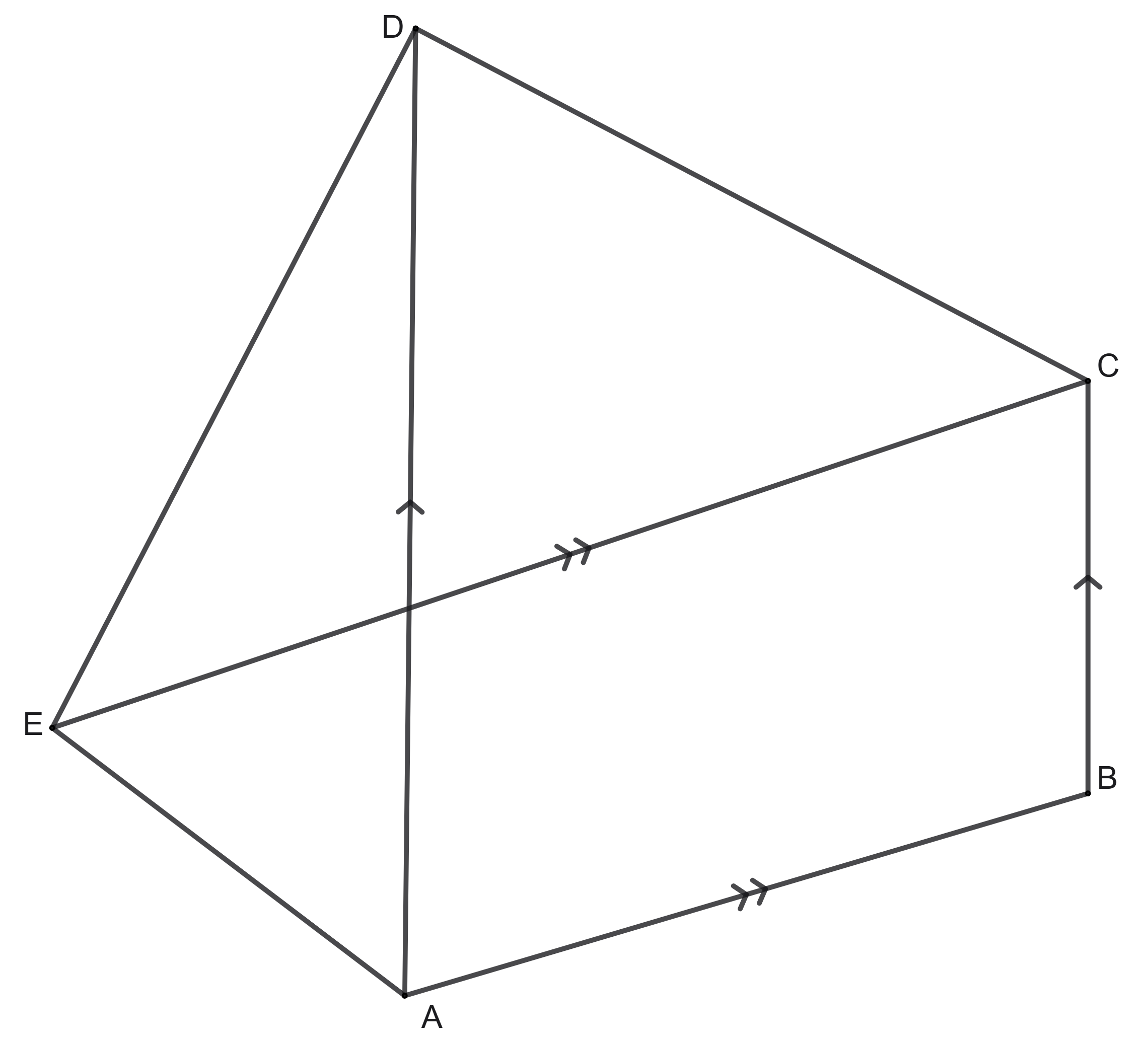Problems
On the left there is a circle inscribed in a square of side 1. On the right there are 16 smaller, identical circles, which all together fit inside a square of side 1. Which area is greater, the yellow or the blue one?

In a pentagon \(ABCDE\), diagonal \(AD\) is parallel to the side \(BC\) and the diagonal \(CE\) is parallel to the side \(AB\). Show that the areas of the triangles \(\triangle ABE\) and \(\triangle BCD\) are the same.

Prove that, for any integer \(n\), among the numbers \(n, n + 1, n + 2, \dots , n + 9\) there is at least one number that is mutually prime with the other nine numbers.
How can you arrange the numbers \(5/177\), \(51/19\) and \(95/9\) and the arithmetical operators “\(+\)”, “\(-\)”, “\(\times\)” and “\(\div\)” such that the result is equal to 2006? Note: you can use the given numbers and operators more than once.
There are 13 weights, each weighing an integer number of grams. It is known that any 12 of them can be divided into two cups of weights, six weights on each one, which will come to equilibrium. Prove that all the weights have the same weight.
If we are given any 100 whole numbers then amongst them it is always possible to choose one, or several of them, so that their sum gives a number divisible by 100. Prove that this is the case.
Numbers \(1, 2, 3, \dots , 101\) are written out in a row in some order. Prove that one can cross out 90 of them so that the remaining 11 will be arranged in their magnitude (either increasing or decreasing).
Find the locus of points whose coordinates \((x, y)\) satisfy the relation \(\sin(x + y) = 0\).
The equations \[ax^2 + bx + c = 0 \tag{1}\] and \[- ax^2 + bx + c \tag{2}\] are given. Prove that if \(x_1\) and \(x_2\) are, respectively, any roots of the equations (1) and (2), then there is a root \(x_3\) of the equation \(\frac 12 ax^2 + bx + c\) such that either \(x_1 \leq x_3 \leq x_2\) or \(x_1 \geq x_3 \geq x_2\).
Prove that if \(x_0^4 + a_1x_0^3 + a_2x_0^2 + a_3x_0 + a_4\) and \(4x_0^3 + 3a_1x_0^2 + 2a_2x_0 + a_3 = 0\) then \(x^4 + a_1x^3 + a_2x^2 + a_3x + a_4\) is divisible by \((x - x_0)^2\).